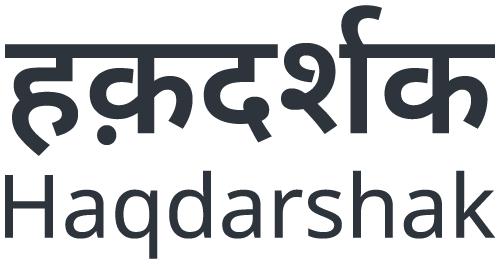Unseen and Unrecognised: The Indians Excluded from Aadhaar

By Arya Raje and Ganesh Pandey
01/ Introduction
In the digital age, identity verification, access to welfare programmes, and data accuracy have become essential for a country’s progress. India’s Aadhaar system was introduced as a solution to these challenges, promising a unique identity to every resident of India. While Aadhaar has its benefits, it also raises concerns about exclusion and accessibility, particularly for marginalised communities. In this blog post, we delve into the ubiquity of Aadhaar, its importance, the issue of exclusion, and its impact on marginalised groups.
02/ The Ubiquity of Aadhaar
Aadhaar has become ubiquitous across India for its utility and growing adoption among residents. An average of over 200 crore Aadhaar-based authentications1 take place in the country every month, and 1670 central and state social welfare and governance schemes2 have been notified for its use. With its linkage to a wide range of services, from mobile phone connections to bank accounts, Aadhaar has, true to its name, become a foundational document for Indian residents.
A 2019 State of Aadhaar survey3 by Dalberg explored the effectiveness of the biometric identification system across various aspects of people’s lives. Among the over 167,000 residents surveyed, it revealed that 80% of those receiving state benefits found Aadhaar to enhance the reliability of services such as public distribution of rations, rural employment guarantees, and social pensions. Also, 49% had used Aadhaar to access a public welfare service for the very first time.
However, the survey also highlighted concerns, revealing that issues with Aadhaar could result in denial of services and exclusion from welfare schemes, with 0.8% of individuals facing exclusion due to Aadhaar-related reasons in key welfare programmes and biometric authentication failures affecting 1.5% of public distribution system users.
03/ The Necessity of an Aadhaar ID
The question of whether Aadhaar is optional or functionally necessary revolves around the practical implications of its usage for accessing essential services and government programmes. Even though Aadhaar identification was introduced as being voluntary4 and Supreme Court orders have clarified that it is not mandatory,5 various factors contribute to its functional necessity in many situations.
1. Welfare Programmes and Subsidies
Aadhaar is often linked to government welfare programmes and subsidies to ensure efficient and targeted delivery. While individuals might technically have the choice not to enroll in Aadhaar, doing so might be practically necessary to access benefits like food subsidies, cash transfers, and other social welfare schemes. Subsidised food under the Public Distribution System (PDS), the mid-day meal scheme, and guaranteed wage under the Mahatma Gandhi National Rural Employment Guarantee Scheme (MGNREGS) all mandatorily require an Aadhaar ID.6
2. Taxation and Financial Services
Aadhaar needs to be mandatorily linked to a PAN (Permanent Account Number) for income tax purposes and is also often required for financial services such as opening bank accounts, applying for loans, or making digital transactions. It also serves as de facto proof of identification for a range of public and private sector services.
3. Mobile Services
While obtaining a new SIM card is possible through other forms of identification, the process often requires Aadhaar-based verification.
4. Healthcare and Public Services
Aadhaar linkage can facilitate access to healthcare services, particularly under government health schemes like the Ayushman Bharat Digital Mission. It might also be used for identity verification in public services like education, where it aids in maintaining accurate records of students.
Thus, while Aadhaar might not be explicitly compulsory, it often becomes functionally necessary due to its convenience, efficiency, and integration into various systems.
04/ Excluded from Aadhaar
Aadhaar identity among adults is considered “near universal” now.7 However, studies have shown that some residents, especially those among marginalised communities, have been excluded from the ambit of Aadhaar, essentially rendering them without a recognised identity.
The Dalberg study further reports that a notable minority of people still do not have Aadhaar, particularly in the States of Assam and Meghalaya.8 In other parts of India, some communities are particularly disadvantaged, including those who are homeless, transgender people, and waste-pickers.
Homeless Persons
While there are special provisions in the Aadhaar Act 2016 to enable an ID for homeless people,9 studies indicate that a sizable number still do not possess it. The Dalberg study found that 30% of homeless people do not have an Aadhaar ID, with a lack of documentation being the primary obstacle to accessing it. NGOs and community organisations working with homeless people have been enabling them to access Aadhaar, along with other crucial documents such as a ration card, noting that “self-identification as a homeless person, without a home that has been registered in a census, ‘obliterate[s] constitutional identity.”10
Transgender Persons
Transgender people also have low levels of enrollment. A 2015 study noted that 75% of transpersons had not obtained Aadhaar11, while the Dalberg study found that 27% of transgender people do not possess Aadhaar. Not only do they face prejudice when enrolling for basic identity documentation, but they also face difficulties when the gender on their existing ID does not match their gender identity and appearance. They have been found to be four times more likely to have an error in their gender data.12 Given the high number of errors in their Aadhaar documentation, they face significant barriers to accessing social security.13
Activists working with the transgender community have opined that the number of persons who are transgender and, consequently, who do not possess a correct Aadhaar ID could be much larger, as the fear of declaring themselves as transgender might have caused them to conceal their true identity.
A transwoman conveyed the difficulties she faced in accessing Aadhaar, poignantly expressing that “With an Aadhaar card, I will be able to say that I am also a human being.”

Ankita is a 40-year-old trans woman living with a community of Mangalmukhi (third gender) in Bangalore. She consistently failed to secure job opportunities and earned her living by begging. When Ankita, along with a group of others from the Mangalmukhi community, went to the Aadhaar enrolment centre, they were not allowed to enter. “We don’t give it to you people,” they were told. “You have a voter ID, that is enough.” She made four attempts over four years and even participated in a protest rally, but each time, she was met with refusal. Still, Ankita remained hopeful about the value that an Aadhaar card could bring — something to show the police when they arbitrarily threatened to arrest her, or to show train conductors and landlords if they troubled her.
(Source: SoA Human Centre Designer 2019)
Waste Management Workers
The informal waste economy includes waste pickers, collectors, manual scavengers, and sanitation workers, among others. Characterised by the intersection of caste, religion, and gender, most of them have been systematically compelled into this occupation because of their socio-economic and caste status.15 Most waste workers struggle with survival, and many of them find it challenging to obtain Aadhaar and other identity documentation, let alone have access to welfare and insurance schemes to meet their needs.16
Other studies show that households eligible for the Public Distribution System (PDS)17 and members of tribal communities18 have also faced challenges, with a number of people disqualified from even applying for welfare benefits due to a lack of an Aadhaar number.
The Dalberg study noted that most people who do not have Aadhaar want the unique identification but are unable to obtain it.19 People left out of the ambit of Aadhaar usually belong to highly marginalised groups, which have a much lower enrolment level than the rest of the population and are among the ones most in need of government support.
05/ Aadhaar-related Errors
Even among those who possess an Aadhaar identification number, its effectiveness may be limited due to numerous errors in their information. The Dalberg study20 found that 4% of people over the age of 15 reported errors in their Aadhaar IDs, and it was found that people with lower levels of education and transgender people had the most errors. Updating Aadhaar has been identified as the most difficult of all Aadhaar-related processes.21
Even if a person is enrolled in the Aadhaar system, they may find it difficult to successfully complete biometric authentication due to their fingerprints not being recognised, which primarily affects construction workers, manual labourers, sanitation workers, etc.
06/ Our Take
Aadhaar has become an integral part of the Indian state and society and has often been found to be effective.22 However, when it does not work, it disproportionately impacts those who are already marginalised. Vulnerable groups have significantly lower enrollment rates, while individuals with limited education face increased errors. Given that Aadhaar is obligatory for numerous services designed to assist the most disadvantaged segments of the population, ensuring its accessibility and functionality for these individuals is even more crucial.
07/ HQ’s Impact with Aadhaar
Aadhaar has become essential as an initial step to accessing welfare benefits in India today. Unfortunately, many of the individuals we assist lack up-to-date Aadhaar cards or unlinked IDs, and are unable to receive welfare benefits. Our Haqdarshaks support residents with obtaining Aadhaar IDs, updating and correcting their information, and crucial linkages to their mobile number, PAN Card, ration card, bank accounts, and Voter IDs. HQ has also partnered with the Unified Mobile Application for New Age Governance (UMANG) to make Aadhaar related applications more seamless for Indian residents.
08/ Our Impact over the Last 7 Years
[visualizer id=”10558″ lazy=”no” class=””]
1 Press Information Bureau release, 21st March 2023
2 Ibid
3 Swetha Totapally, Petra Sonderegger, Priti Rao, Jasper Gosselt, Gaurav Gupta State of Aadhaar Report 2019. Dalberg, 2019
4 K, Abhijeet, “Decrypting Aadhaar”, SocArXiv, 11th May 2021
5 Justice K.S Puttaswamy and Anr. v. Union of India and Ors, W.P 494 of 2012
6 https://www.scobserver.in/cases/puttaswamy-v-union-of-india-constitutionality-of-aadhaar-act-case-background/
7 Press Information Bureau India: Release ID 1856299
8 Swetha Totapally, Petra Sonderegger, Priti Rao, Jasper Gosselt, Gaurav Gupta State of Aadhaar Report 2019. Dalberg, 2019
9 Section 5 of the Aadhaar Act, 2016 provides that the authority (UIDAI) shall take special measures to issue Aadhaar numbers to persons who do not have any permanent dwelling house. UIDAI has provided the facility to enrol persons who do not possess the required supporting documents through a pre-designated introducer.
10 Sudarshan R. Kottai and Shubha Ranganathan, “When ‘care’ leads to ‘chronicity’: Exploring the changing contours of care of homeless people living on the streets in India
11 Govindasamy Agoramoorthy and Minna J. Hsu, “Living on the Societal Edge: India’s Transgender Realities”
12 Swetha Totapally, Petra Sonderegger, Priti Rao, Jasper Gosselt, Gaurav Gupta State of Aadhaar Report 2019. Dalberg, 2019.
13 Govindasamy Agoramoorthy and Minna J. Hsu, “Living on the Societal Edge: India’s Transgender Realities”
14 Sudhir Rangappa Narayana, “Marginal Identity: Narratives of Transgender People in Accessing Identification and Welfare Schemes in Bangalore”
15 Surekha Garimella, Shrutika Murthy, Lana Whittaker and Rachel Tolhurst, “Pandemic policy responses and embodied realities among ‘waste-pickers’ in India” from the book “Viral Loads”
16 Ibid
17 Anmol Somanchi, Srujana Bej, Mrityunjay Pandey, “Well done ABBA? Aadhaar and the Public Distribution System in Hyderabad” Economic and Political Weekly, Vol. 52, Issue No. 7, 18 Feb, 2017
18 Anmol Somanchi, “Food and Social Security at the Margins, The Parhaiyas of Jharkhand” Economic and Political Weekly, Vol. 58, Issue No. 4, 28 Jan, 2023
19 Swetha Totapally, Petra Sonderegger, Priti Rao, Jasper Gosselt, Gaurav Gupta State of Aadhaar Report 2019. Dalberg, 2019.
20 Ibid
21 Ibid
22 Sandip Mukhopadhyay, Harry Bouwman, Mahadeo Prasad Jaiswal, “An open platform centric approach for scalable government service delivery to the poor: The Aadhaar case” Government Information Quarterly, Volume 36, Issue 3, 2019.



